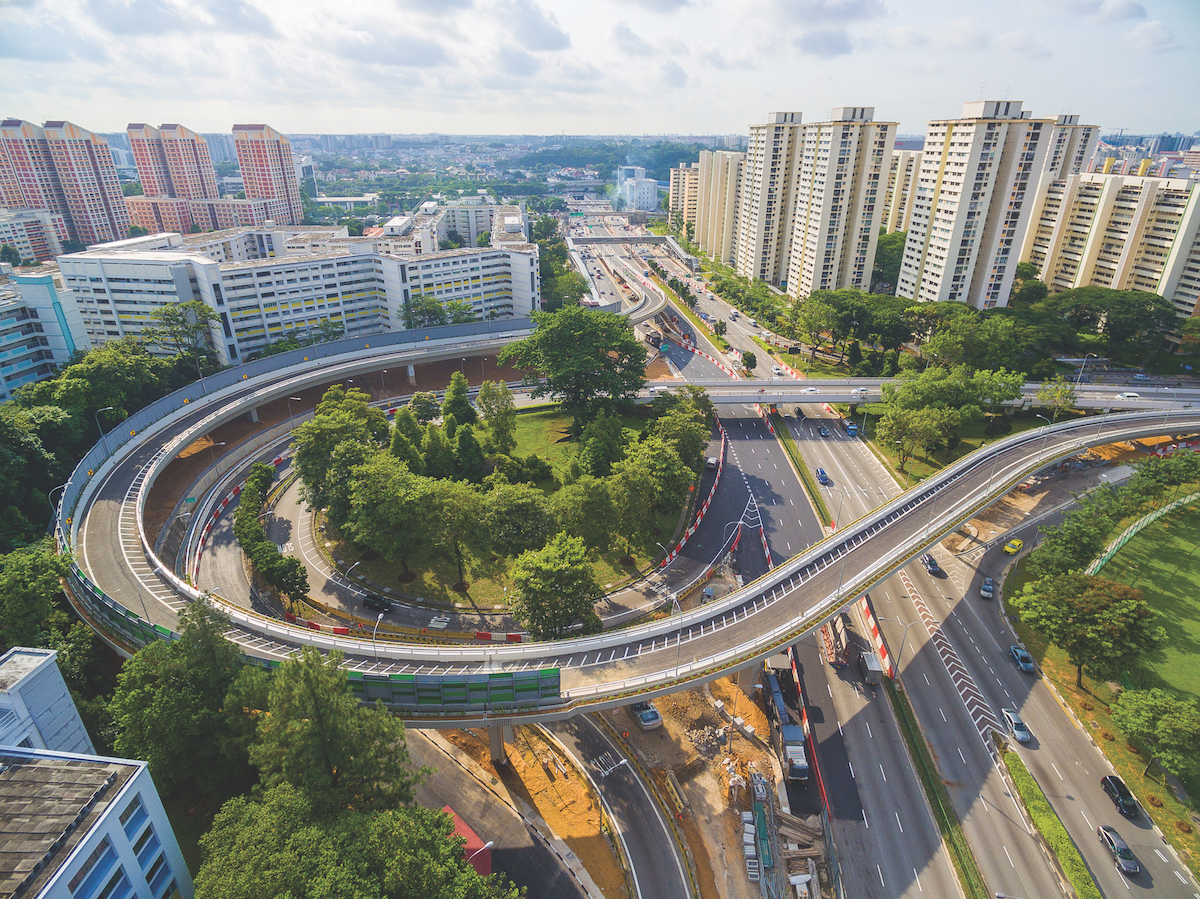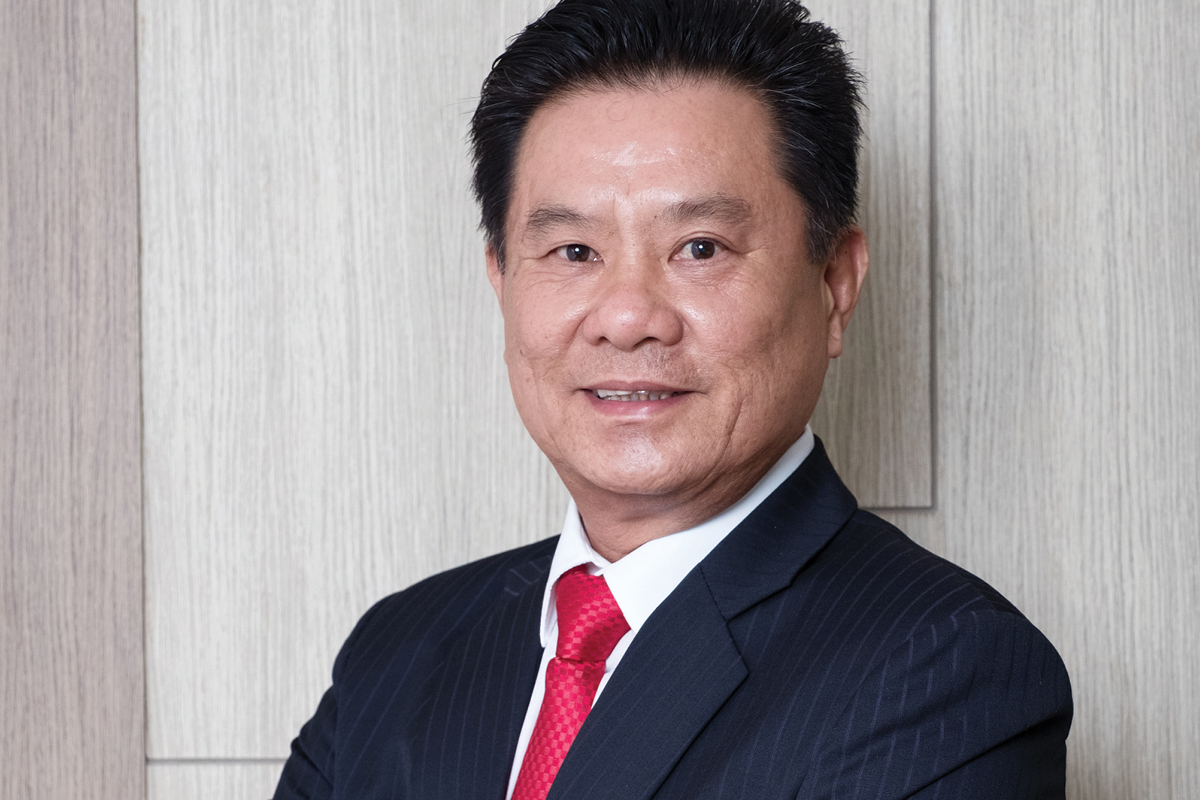When Feng Ming Construction Managing Director Hong Beng Lim was a teenager, he witnessed firsthand Singapore’s transformation from an empty rural landscape to a thriving city dotted with an array of high-rise buildings. “The way the roofs led from one building to another always inspired me,” Hong Beng tells The CEO Magazine.
“I wanted to be useful and contribute to society, and I knew that if I took part in this transformation, I would also fulfil my dream.” In 1989, Hong Beng turned his dream into a reality by founding Feng Ming Construction (FM), a civil engineering powerhouse that handles infrastructure projects such as roads, waterways, tunnels and bridges.
With a workforce of more than 250 people, the company has conducted more than 120 projects throughout Singapore. Its revenue has doubled over the past five years and, in 2016, recorded the completion of S$500-million worth of construction works.
Some of FM’s projects include upgrading part of Singapore’s East Coast Parkway, a 20-kilometre expressway that goes along
the country’s southeast coast; water diversion works to support the construction of Lendlease Singapore’s massive S$3.2-billion, 3.9-hectare Paya Lebar Quarter development; and the rejuvenation of Muscat Street, which leads to the mesmerising Masjid Sultan mosque.
The redevelopment project, undertaken in 2012, was a collaboration between Oman’s Muscat Municipality and Singapore’s Urban Redevelopment Authority. It involved infusing traditional Omani architecture, such as eight-metre-high granite arches to frame traditional artworks and ancient tiling patterns.
The challenges
Challenges are a part of every business and, for Hong Beng, one of the most difficult projects was the company’s first vehicular bridge (flyover) on Braddell Road. “In a flyover, you have to build your supporting structure,” he explains.
“The columns were designed and located in such a way that they hit critical underground services such as utility networks and water pipes. We had to redesign this in a very short period and it affected several things because shifting the location of one column would mean we’d have to shift the entire bridge.”
Nevertheless, the company persevered, with a mentality Hong Beng constantly reinforced. “We have always maintained a positive mindset,” he says. “Nothing is impossible. We always tell our staff when they encounter any challenge that it’s an opportunity to learn.”
Throughout its operating years, FM has gained acclaim for its innovative approaches to construction. Its road network, which supported the development of the Jurong Lake District, earned FM a Land Transport Authority Innovative Solution Award as it pioneered the use of beam-jacking to construct a bridge under live train viaducts.
Similarly, FM’s upgrade to the Rochor Canal received a Singapore Contractors Association Innovation Award for not affecting the existing water flow during construction.
The Rochor Canal upgrade proved another challenge for FM. Part of the Public Utilities Board’s Active, Beautiful, Clean (ABC) Waters program, it involved widening the canal for better drainage.
“It was quite complicated,” Hong Beng recalls. “Before we could start on the canal, we had to build a dam to prevent water flowing into the construction area. However, cracks started to form in the dam which created leakages. To stop the problem, we used biodegradable dyes in the water to identify the leaks and cracks while not harming the environment,” he adds. The cracks were then patched up with clay and the construction continued.
Building Information Modelling
Having worked in the construction industry for more than 30 years, Hong Beng says the biggest change he has seen is the amount of information now available when embarking on a project. He specifically refers to Building Information Modelling (BIM) which has revolutionised the construction industry.

“With the BIM, I can track the progress of a project from the beginning of the design until completion,” he says. “It can also minimise stops and delays by monitoring the project. Previously, you had to draw a plan using 2D images. The BIM instead puts a 3D model on the computer system, allowing us to look at the quantities we need very quickly. We can even do a virtual walk-through of all the various projects we have.”
But what has remained the same since FM’s establishment is a commitment to safety. “All our staff are required to do a Safety Induction Course,” Hong Beng says. “We also carry out safety training daily, giving our staff an overview of the project and alerting them to all possible dangers onsite. Our staff are also sent to learn the new city rules and regulations implemented by our government.” An annual safety seminar further keeps FM employees updated on the latest safety trends.
FM values its supplier relationships and always finds ways to support them. In some cases, the company helps its subcontractors with their equity issues by introducing banking services to them or providing payment in advance. “I strongly believe in a win-win situation with our suppliers and subcontractors,” Hong Beng says. “We want to ensure they are profitable.”
Further, FM endeavours to support subcontractors who don’t secure bids. “In a typical contracting model, several bids are put in and the most competitive one is selected,” Hong Beng continues.
“But we try to assist those who are less competitive because we understand that future jobs are critical to their success. We help them become more competitive by sending them information, helping to evaluate their bid and so forth. It’s our way of ensuring the whole ecosystem of subcontractors and suppliers remains viable.”
The importance of integrity
At the end of the day, the company is governed by integrity. “We believe in building trust with all our stakeholders,” Hong Beng says. “We complete all our tasks without compromising on the focus and quality of the work. Before we start any project, we appraise it to find the best solutions, taking into consideration the client’s price expectation.”
There are a lot of areas Hong Beng wants to capitalise on to keep the business growing into the future. “In terms of short-term goals, we need more automation at our construction sites. This is our biggest challenge,” he says. “The next is to reduce, recycle and reuse our construction material to reduce our carbon footprint.”
“For our long-term goals, we want to invest in emerging markets. We intend to export and establish two to three offices within the next five years, possibly in Vietnam, Myanmar or the Philippines. Finally, we want to continue to be innovative by constantly studying the market.”

